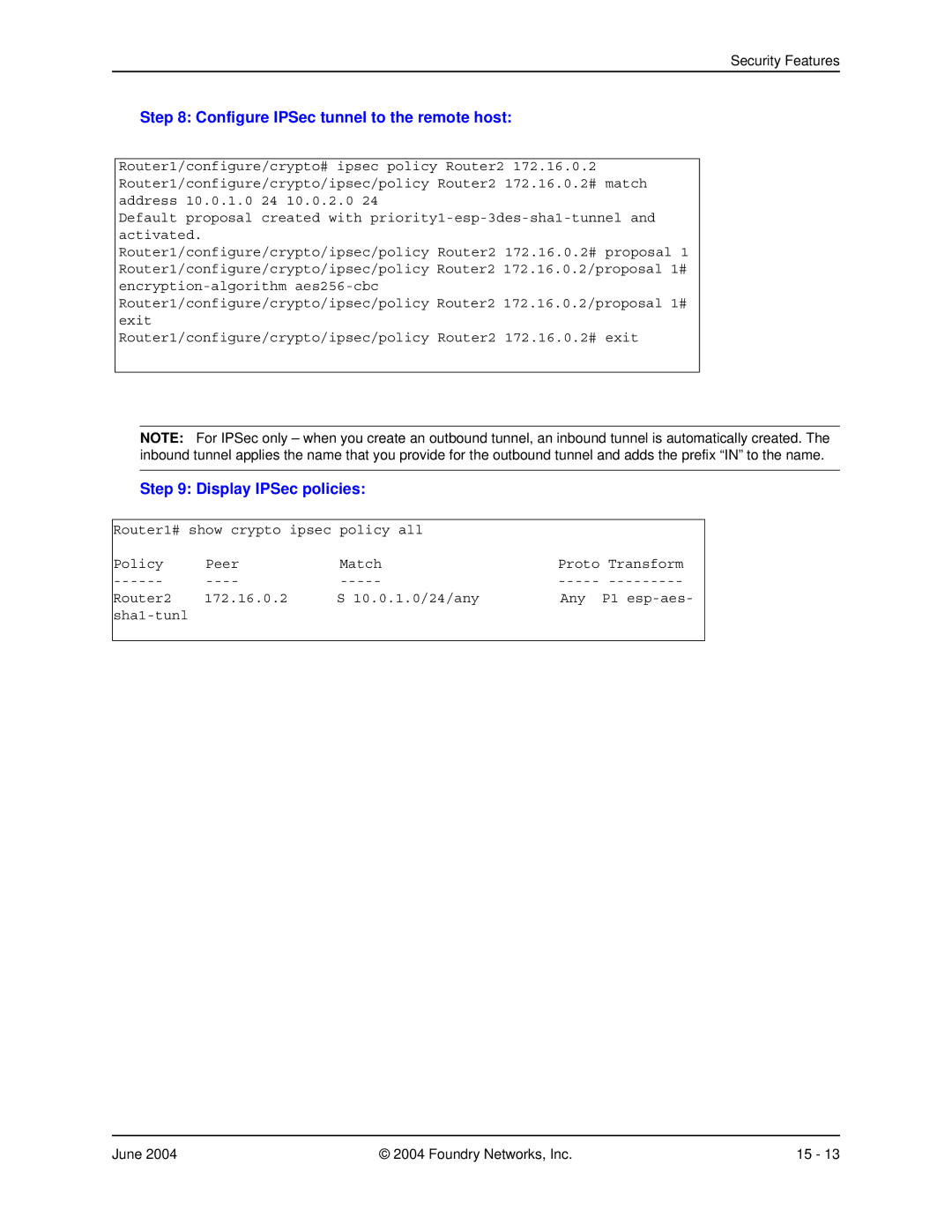
Security Features
Step 8: Configure IPSec tunnel to the remote host:
Router1/configure/crypto# ipsec policy Router2 172.16.0.2 Router1/configure/crypto/ipsec/policy Router2 172.16.0.2# match address 10.0.1.0 24 10.0.2.0 24
Default proposal created with
Router1/configure/crypto/ipsec/policy Router2 172.16.0.2# proposal 1 Router1/configure/crypto/ipsec/policy Router2 172.16.0.2/proposal 1#
Router1/configure/crypto/ipsec/policy Router2 172.16.0.2# exit
NOTE: For IPSec only – when you create an outbound tunnel, an inbound tunnel is automatically created. The inbound tunnel applies the name that you provide for the outbound tunnel and adds the prefix “IN” to the name.
Step 9: Display IPSec policies:
Router1# show crypto ipsec policy all |
| ||
Policy | Peer | Match | Proto Transform |
Router2 | 172.16.0.2 | S 10.0.1.0/24/any | Any P1 |
|
|
| |
|
|
|
|
June 2004 | © 2004 Foundry Networks, Inc. | 15 - 13 |
